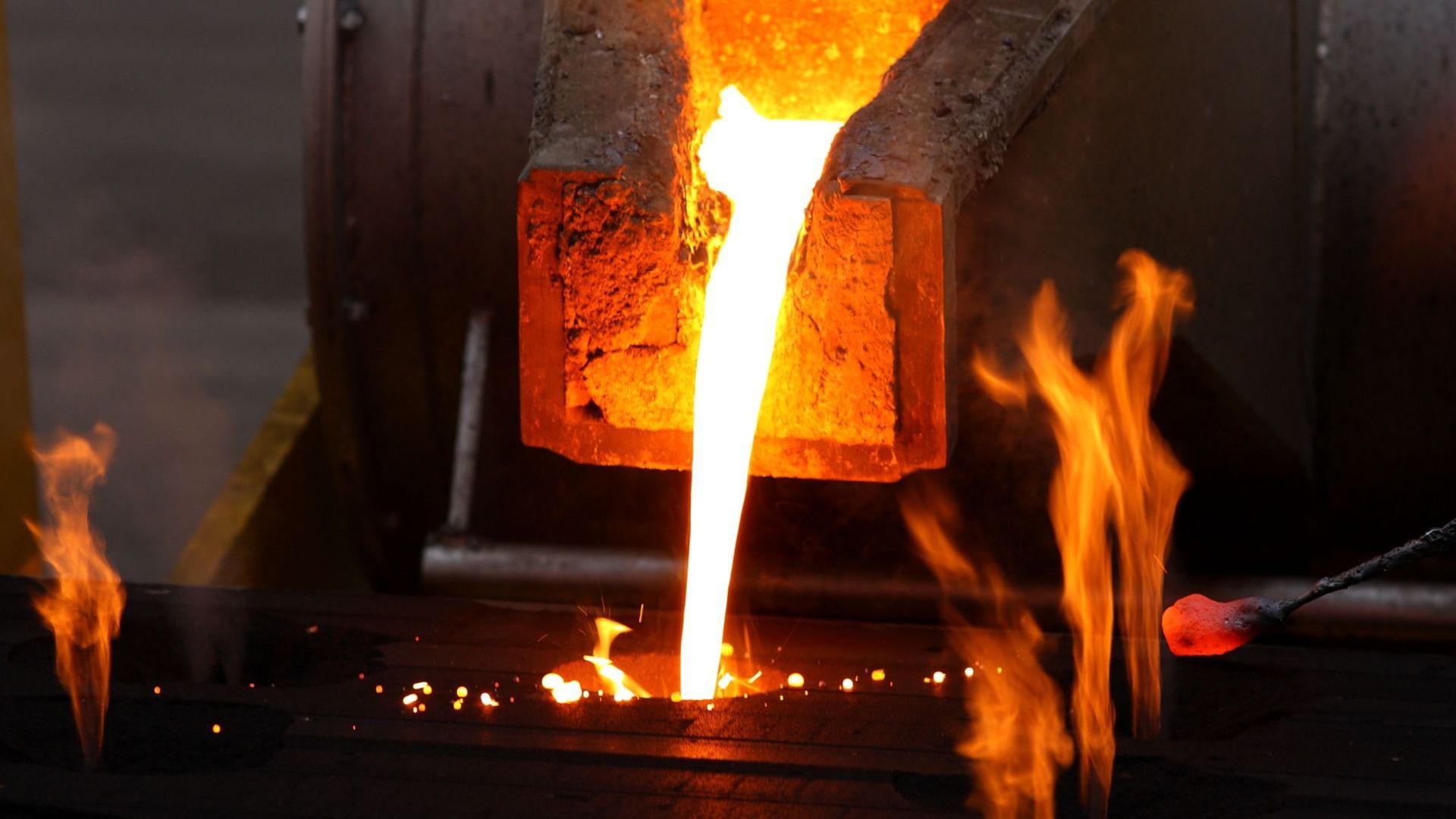The Art and Science of Sand Casting: Crafting Precision from Molten Metal
At Anchor Castings, nestled here in Neenah, Wisconsin, we've dedicated over a century to mastering a process that's both ancient and incredibly precise: sand casting. While it might sound simple – pouring molten metal into sand – the reality is a fascinating blend of engineering expertise, skilled craftsmanship, and meticulous attention to detail.
So, what exactly is sand casting, and why has it remained a cornerstone of manufacturing for thousands of years, especially for the custom non-ferrous components we specialize in? Let's delve into the art and science behind it.
What is Sand Casting? The Fundamentals
At its heart, sand casting is a metal forming process that uses a non-reusable sand mold to create metal parts. It's incredibly versatile, making it ideal for producing complex shapes, both large and small, and for manufacturing a wide range of metal alloys. For Anchor Castings, this means expertly working with aluminum, manganese bronze, aluminum bronze, and silicon bronze to meet diverse industrial needs.
The Sand Casting Process: Step-by-Step
While our experienced team makes it look seamless, a successful sand casting involves several critical stages, each demanding precision and skill:
1. Pattern Creation: The Blueprint of Your Part
Everything begins with a pattern. This is a replica of the finished part, typically made from wood, metal, or plastic, and slightly oversized to account for metal shrinkage during cooling.
- The "Art" here: Our team often assists with pattern development. This initial stage is crucial – a well-designed pattern ensures the final casting meets your exact specifications and allows for efficient mold creation. Imperfections here propagate through the entire process.
2. Mold Creation: Sand, Binders, and Cavities
Next, the pattern is used to create the sand mold. This involves packing special foundry sand – a mixture of high-quality silica sand, clay (for bonding), and water (or other chemical binders) – around the pattern within a two-part flask (a metal box).
- The "Science" here: The sand mixture must have specific properties:
- Permeability: To allow gases to escape during pouring.
- Refractoriness: To withstand the extreme heat of molten metal.
- Collapsibility: To allow the mold to break apart easily after casting.
- Cohesiveness: To hold its shape during handling.
- Once packed, the pattern is carefully removed, leaving a perfect cavity – the mold – in the shape of the desired part. We also create channels (gates and risers) for the molten metal to flow into the cavity and to feed the casting as it solidifies.
3. Core Placement (If Needed): Crafting Internal Features
For parts with internal voids or complex hollow sections, separate sand cores are made. These cores are placed inside the mold cavity before the mold halves are closed.
- The "Precision" here: Cores must be accurately positioned and stable to prevent displacement during pouring, ensuring the integrity of the final part's internal geometry.
4. Mold Assembly & Clamping: Ready for the Pour
The two halves of the sand mold (cope and drag) are carefully closed and clamped together. This ensures the mold remains secure and prevents leakage when the molten metal is introduced.
5. Melting & Pouring: The Fiery Heart of the Process
This is where the magic happens! Our non-ferrous alloys – aluminum, manganese bronze, aluminum bronze, or silicon bronze – are melted in furnaces to precise temperatures. The molten metal is then carefully poured into the mold cavity through the prepared gating system.
- The "Experience" here: Controlling the temperature, pour rate, and cleanliness of the melt are critical to prevent defects and ensure the metallurgical integrity of the final casting. Our team's century of experience truly shines here.
6. Solidification & Cooling: Forming the Metal
Once poured, the molten metal begins to cool and solidify within the mold. As it cools, it shrinks, and the risers feed additional molten metal into the casting to compensate for this shrinkage, preventing voids.
7. Shakeout: Revealing the Casting
After sufficient cooling, the mold is broken apart (the "shakeout" process), revealing the raw casting. The sand is then recycled for future use.
8. Finishing Operations: From Rough to Refined
The newly cast part will have excess metal from the gating and riser systems. These are removed, and the part undergoes various finishing operations, which can include:
- Grinding: To smooth rough edges.
- Blasting: To clean the surface.
- Heat Treating: (An Anchor Castings specialty!) To improve mechanical properties like strength or hardness.
- Machining: (Another Anchor Castings specialty!) For parts requiring tight tolerances and precision finishes.
- Quality Control & Certification: Rigorous inspection ensures the part meets all specifications and quality standards, with certifications available as needed.
Why Sand Casting with Anchor Castings?
The longevity of sand casting is a testament to its effectiveness and versatility. For Anchor Castings, our commitment to this process, combined with our focus on non-ferrous metals and low-to-mid volume custom solutions, means:
- Unmatched Versatility: Ideal for complex geometries and a wide range of part sizes.
- Cost-Effectiveness: Especially for low to mid-volume production runs.
- Material Diversity: Expertise in aluminum, manganese, and silicon bronzes for optimal performance.
- Comprehensive Solutions: From pattern development and pouring to heat treating and machining, we provide a complete, custom solution under one roof.
- Proven Quality: Backed by over 100 years of experience right here in Neenah, Wisconsin, we deliver quality components on time, every time.
Whether you need durable bronze components for marine applications, lightweight aluminum parts for industrial machinery, or specialized silicon bronze for specific corrosion resistance, sand casting offers the robust foundation. At Anchor Castings, we take pride in applying this timeless art and science to bring your most challenging designs to life.
Ready to explore custom casting solutions for your next project?
Contact Anchor Castings Today for a Quote!

